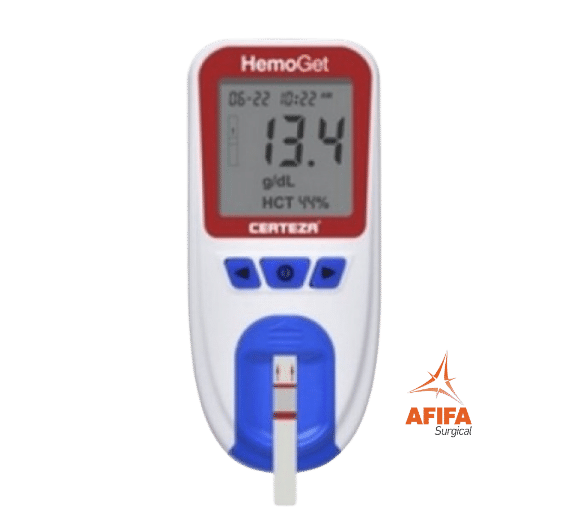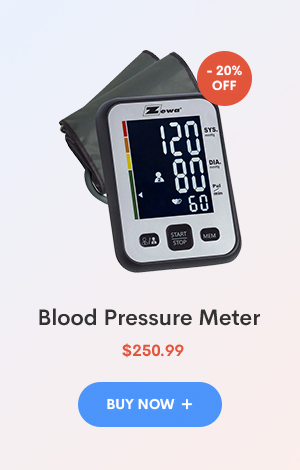Description
Certeza HemoGet Hemoglobin Meter HB-101 Price in Pakistan
Are you or your loved one suffering from anemia, diabetes, or other health conditions that require frequent monitoring of hemoglobin levels? Look no further than the Certeza HemoGet Hemoglobin Meter HB-101. In this article, we will delve into the features, benefits, and drawbacks of this revolutionary device.
What is Certeza HemoGet Hemoglobin Meter HB-101?
The Certeza HemoGet Hemoglobin Meter HB-101 is a handheld, battery-operated device that measures hemoglobin levels in whole blood using a non-invasive method. This innovative device uses an optical sensor to detect the hemoglobin concentration in a small volume of blood without the need for needles or lancets. The HemoGet Meter is designed to be used by healthcare professionals, patients, and caregivers in various settings, including hospitals, clinics, home care, and remote locations.
Features and Benefits of Certeza HemoGet Hemoglobin Meter HB-101
The Certeza HemoGet Hemoglobin Meter HB-101 offers several features and benefits that make it stand out from other hemoglobin meters on the market. Here are some of the key features and benefits of the HemoGet Meter:
Non-Invasive Testing
The HemoGet Meter uses a non-invasive method to measure hemoglobin levels, which eliminates the need for painful and time-consuming blood draws. This feature is especially beneficial for patients who require frequent hemoglobin testing, such as those with anemia or diabetes.
Fast and Accurate Results
The HemoGet Meter provides fast and accurate hemoglobin results within seconds. The device uses a proprietary algorithm to calculate the hemoglobin concentration based on the optical sensor readings. The results are displayed on the device’s screen and can be stored for future reference.
Portable and Easy to Use
The HemoGet Meter is small, lightweight, and easy to use. The device can be carried in a pocket or purse, making it ideal for use in remote locations or during travel. The device’s intuitive interface and simple operation make it easy for patients and caregivers to use without any special training.
Cost-Effective Solution
The HemoGet Meter offers a cost-effective solution for hemoglobin testing compared to traditional laboratory testing. The device is affordable and requires no additional consumables or maintenance, which can save healthcare providers and patients time and money.
Versatile Testing
The HemoGet Meter can be used to measure hemoglobin levels in various populations, including infants, children, adults, and the elderly. The device can also be used to monitor hemoglobin levels in patients with chronic conditions, such as anemia, sickle cell disease, and diabetes.
Drawbacks of Certeza HemoGet Hemoglobin Meter HB-101
While the Certeza HemoGet Hemoglobin Meter HB-101 offers several advantages, it also has some drawbacks that need to be considered. Here are some of the potential drawbacks of the HemoGet Meter:
Calibration Required
The HemoGet Meter requires periodic calibration to ensure accurate and reliable results. Calibration is performed using a control solution that is provided with the device. Failure to calibrate the device properly can lead to inaccurate results.
Limited Testing Range
The HemoGet Meter has a limited testing range, which means that it can only measure hemoglobin levels within a specific range. The device’s range is 4.5-21.0 g/dL, which may not be suitable for patients with extremely low or high hemoglobin levels.
Interference
The HemoGet Meter may be affected by external factors that can interfere with the hemoglobin measurements. These factors include temperature, humidity, light, and movement.
How to Use Certeza HemoGet Hemoglobin Meter HB-101?
Using the Certeza HemoGet Hemoglobin Meter HB-101 is a simple and straightforward process. Here are the basic steps to follow:
- Turn on the device by pressing the power button.
- Insert a test strip into the device’s strip port.
- Prick the patient’s fingertip using a lancet or needle.
- Place the fingertip over the test strip and wait for the device to display the hemoglobin result.
- Record the result and dispose of the used test strip properly.
It is important to follow the manufacturer’s instructions and guidelines for proper use and maintenance of the device.
Who Can Benefit from Certeza HemoGet Hemoglobin Meter HB-101?
The Certeza HemoGet Hemoglobin Meter HB-101 can benefit various populations, including:
Patients with Anemia
Anemia is a common blood disorder that affects millions of people worldwide. It is characterized by a low hemoglobin level, which can cause fatigue, weakness, and other symptoms. The HemoGet Meter can be used to monitor hemoglobin levels in patients with anemia and to adjust their treatment accordingly.
Patients with Diabetes
Diabetes is a chronic condition that affects the body’s ability to regulate blood sugar levels. It can also affect hemoglobin levels, leading to complications such as diabetic retinopathy and neuropathy. The HemoGet Meter can be used to monitor hemoglobin levels in diabetic patients and to prevent or manage these complications.
Healthcare Professionals
The HemoGet Meter can be a valuable tool for healthcare professionals, including doctors, nurses, and caregivers. It allows for fast, accurate, and non-invasive hemoglobin testing, which can improve patient care and outcomes.
Conclusion
The Certeza HemoGet Hemoglobin Meter HB-101 is a revolutionary device that offers fast, accurate, and non-invasive hemoglobin testing. It provides several benefits, including cost-effectiveness, portability, and ease of use. However, it also has some potential drawbacks, such as the need for periodic calibration and limited testing range. Overall, the HemoGet Meter can benefit various populations, including patients with anemia, diabetes, and healthcare professionals.
{finish}
FAQs
- Is the Certeza HemoGet Hemoglobin Meter HB-101 FDA-approved?
Yes, the HemoGet Meter is FDA-approved for use in the United States.
- How often does the device need to be calibrated?
The device needs to be calibrated once every six months or whenever a new box of test strips is opened.
- Can the HemoGet Meter be used for blood glucose testing?
No, the HemoGet Meter is specifically designed for hemoglobin testing and cannot be used for blood glucose testing.
- How long does it take to get a hemoglobin result?
The HemoGet Meter provides a hemoglobin result within five seconds.
- Is the device covered by insurance?
The device may be covered by insurance, depending on the patient’s insurance plan and coverage. Patients are advised to check with their insurance provider for more information.



Zain Ali –
The ordering process with AfifaSurgical was seamless – I had no trouble finding what I needed and placing my order.